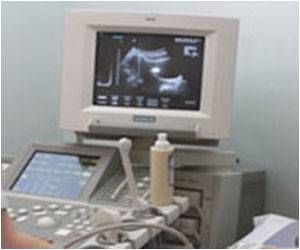Volatile organic compound technology can be used to predict preterm birth with an accuracy of 73%. The device is trained to detect bacterial vaginosis.
- Volatile organic compound (VOC) technology can predict preterm birth in high-risk asymptomatic women
- VOC technique identifies chemical vapor patterns that indicate bacterial vaginosis
- VOC technique has an accuracy of 73% when tested closer to the time of delivery
- VOC technique can significantly improve healthcare support for women during pregnancy and birth
Read More..
Preterm birth is considered as the leading cause of death in children less than 5 years old.
Preterm birth is a syndrome which is characterized by multiple factors such as infection, vascular disease, inflammation and uterine overdistention.
This complex nature of preterm birth makes its prediction hard. Presently, there are only a few accurate tools to predict preterm birth.
What is the Relationship between Bacterial Vaginosis and Preterm Birth?
The relationship between bacterial vaginosis and preterm birth have been known for many years.
The presence of bacterial vaginosis is generally associated with an increased risk of preterm birth. However, treating it doesn’t reduce the risk.
The researchers used a technique called volatile organic compound (VOC) analysis .
VOCs are designed to monitor airborne chemicals. The scientists ‘trained’ the device using machine-learning techniques to identify the chemical vapor patterns from preterm birth using vaginal swabs.
Volatile organic compound analysis technology works by separating vapor molecules by using two techniques. First, the technique pre-separates molecules according to their reaction with a stationary phase coating (gas-chromatography).
Secondly, it measures the mobility of the vapor particles in a high-electric field (Ion Mobility Spectrometer).
The machine is ‘trained’ to spot patterns that are signs of bacterial vaginosis.
VOC technology reflects both the microbiome and the host response. Whereas, other techniques usually focus on a specific biomarker.
What are the Results Obtained by the Researchers?
Vaginal swabs taken from various pregnant women attending a preterm prevention clinic were analyzed.
These women were asymptomatic with a prior history of preterm births or a medical condition that has a higher risk of preterm birth.
Vaginal swabs were taken from 216 patients. Swabs were taken during the second and third trimesters of pregnancy.
The first test had an accuracy of 66%. A second test, closer to the time of the delivery had a better accuracy of 73%.
The test results mean that about 7/10 women with a positive test had a preterm delivery. In comparison, 9/10 women with a negative test delivered normally.
The lead author Dr. Lauren Lacy suggested that, even though the test taken early during the pregnancy was less accurate, it could allow possible interventions to reduce the risk of preterm delivery.
In summary, VOC technology has a potential to be used as a predictive tool for preterm birth.
The authors think the next stage of research would focus on storing a small VOC device in the hospital to analyze samples. They hope that it could eventually be developed into a test that could be used in a labor ward triage.
Source-Medindia












